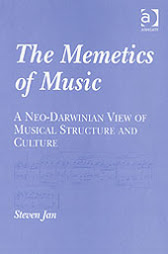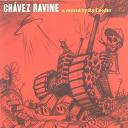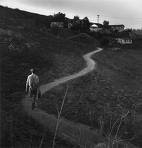Valesi Marco
Thinking about a social virtual museum
Abstract
Historically the idea of virtual is commonly associated with the extension reality concept; following this paradigm, I will use the expression virtual museum in order to describe a duplication process, created using information technologies, of a traditional museum and its objects. Consequently virtual museum becomes an important framework for multimedia producers looking for new and dynamic experiences representations. This paper lowest common denominator is to do a reflection about this realities: I would like, briefly, to analyze the contemporary role of the museum and then challenge this by proposing different visions; to question the relation between traditional and virtual museums and the social dimension of cultural artifacts and finally to point out one example that combines different technologies supporting the social production of heritage.
Introduction
The heritage concept is a dynamic information process that could derive from a physical site or intangible activities heritage but borrowing the Batesonian idea “the map is not the territory” we can consider every kind of museum as a virtual reality, independent of information technologies. In fact even if we compare the two different definitions (museum is a "permanent institution in the service of society and of its development, open to the public, which acquires, conserves, researches, communicates and exhibits the tangible and intangible heritage of humanity and its environment, for the purposes of education, study, and enjoyment", as defined by the International Council of Museums; virtual museum is a “museum that exists only on-line, including, but not limited, to museums that hold object originally created digitally, such as Net art, Virtual Reality and Digital art. It is often used to refer to a museum that takes advantages of the Internet to display digital representations, of its collections”-Wikipedia) we can say that both exhibit cultural objects from different environments trying to create new relations between its original environment and the new social contexts: so they are meta-places in which the cultural meaning of pieces is virtual recreated.
Cultural objects should also be considered as virtual representing "a complex and multifaceted reality in which physical, cultural and virtual reality interact and may acquire different functions and different degrees of importance". In the actual digital era, using information technologies, we can increase this interaction underlining different functions and scale of values according to the meaning that we need to represent. Modern technology is creating new ways of experiencing and thinking about heritage: by combining different media and technologies, cross-media interaction supports the social production of heritage and creates infrastructures promoting places of cultural invention and heritage promotion. This kind of approach is not only an opportunity, but also a socio-cultural necessity. The most important aspect of this interaction is the interpretation and communication of the same process and the final result passes throughout the interaction and feedback with the users-creators.
We are continuously stimulated by information and communication technologies, and we are part of an accelerating process of cultural change in which the transformation of the structure and function of museums will need new mental designs, concepts able to integrate material and immaterial components but also social communities. This last element has to become an important aspect of the same exhibition process not only creating users, visitors but above all offering unifying collective memory and personal experiences. I guess the key word could be “mindscape” intended as the perception of landscape through places, spaces, mental maps and minds. In my opinion the final aim is the reconstruction of the mindscape and the transformation of both museums in living organisms linking people, visions, interpretations and values of various locations.
Museums and Technology
In the digital era one of the most important opportunities offered by information technologies is provided by the possibility of reproducing our cultural artifacts digitally: this evolution permits to have any kind of information readily available and easily consulted. The visual and interactive characteristics of information technologies have massively contributed to the growth of knowledge and to create new educational processes based on more immediate and intuitive forms of learning. Moreover, thanks to new technologies, the opportunities for an interactive access to real museum objects have exponentially increased, opening new paths to the elaboration of knowledge. Comparing a traditional and a virtual exhibition it easy to realize how many possibilities the second reality offers the visitor: they are free to look for, combine and re-contextualize the information they need according to their interests.
This revolution in accessibility improves the interconnection and horizontal recombination of all the contents. Consequently it becomes possible, in a virtual museum to organize exhibitions, to build and rebuild collections, to restore and reconstruct the past (I am thinking in Virtual Archeology), to hypothesize the future. Therefore the virtual museum becomes a new interaction permitting visitors to create a virtual embodiment and use Internet as collective, global data base.
In short a new interpretation of reality, embodiment and personalization, interaction are elementary applications of the concept of virtuality to the museum, empowering the interconnection among the physical, the virtual and the cultural dimensions.
The new museum role
Anyway the big opportunities offered to museums by information technologies require a new interpretation, using innovative ideas, solutions, of the contemporary role of the museum. It’s necessary to understand the present educational role of the museum in our society and prove how the museum can reinforce today the roots of the community. Moreover: what is the function of new media? Which is the importance of a new social community? Is it possible to create, in a virtual museum, a connection between conservation and creation, new technologies and creativity, real and virtual life?
In order to understand and explore new opportunities for virtual museums, the relation knowledge-technology must be transformed and a new perspective searched. We must use information technologies but most of all we have to know what we want to create with those supports. We can’t forget the hyperreality risk disclosed by Jean Baudrillard “to simulate something which never really existed”.
I would suggest some possible paths for the evolution of the concept of virtual museum and the development of a socio-relational form of virtuality. The complexity of a museum, made of interior and external relationship, for example in the community and the territory to which the community belongs, creates a special feeling that can be used not only to improve communication and interaction between the institution and the context, but also to change the reality of the museum in open and dynamic structures. Information technologies offer innovations in the way the museum creates both relationships. Now, we must consider not only how information technologies can be used, but also how they can help us to rethink the museum. These technologies can improve not only the museum understanding but they must also contribute to its creation: they must help us to invent new models of museum, and support new design methods. The question, both for creators and users, should be: how can I design a museum today trying to create a virtual embodiment?
HTTP://MUVA.ELPAIS.COM.UY/
I think this virtual museum, that recreates the sensation of being inside a building using as guiding principle the generation of virtual environments linked to reality, is a great example to propose. In this final part of the article I just want to point it out underlining the perfect combination of different technologies supporting the social production of heritage. To do it I will use part of a presentation of Haber Alicia, director of the museum, proposed during the 3rd International Conference of Museology June 5-8 2006 - Mytilene, Greece. The topic of her discourse shows the infinite possibilities offered by the Web to eliminate diverse difficulties: many constraints can disappear in Cyberspace! First of all using the net they created a new geographical landscape converting the MUVA in a “third world strategy of cultural survival change and growth trying to include a peripheral but interesting culture, site and country in a world-web dominated by bigger countries and dominant cultures”.
Secondly through the Museo Virtual de Artes (MUVA) an economic aspect was partially solved: “the rationale for the creation of MUVA's virtual building, is that the construction of an art museum such as the outstanding ones in the great metropolitan capitals of the world, would have cost from 50 to I00 million dollars, a prohibitive sum in the situation of Uruguay. A new museum is not even in the long-term plans of the Government or the Municipality or of any other public or private institution”.
Third a socio-cultural aspect: “MUVA seeks new opportunities for Uruguayan art and tries to give it more visibility. It offers a new venue for Uruguayan artists and wants to increase and improve opportunities for Uruguayan artists to enable them to come doser to the national and international art community on the subject”. The innovative idea is to disseminate knowledge about the country and make its resources and cultural heritage more accessible. At the same time, MUVA endeavors to decentralize culture.
Finally: “MUVA hopes to encourage cultural diversification in the Net and one of the goals we hope to achieve is to attract different profiles of visitors and increase the number of our viewers. MUVA also aims at attracting new audiences for art, for the "real" museums and collections and to stimulate them to enjoy "real" artworks”.
Conclusion
One of the biggest difficult approaching the virtual museum area is the difficulty in opening up a deep conversation of what the role of the museum is today. The interaction between those two worlds is not completed and we are still working with new technology in old frameworks. Technologically, I think we are very early in the use of a real social technology, so there are so many usability and design issues that it will probably take time to use it completely. Fortunately there are stimulating approaches like MUVA, where the Web is used not as an exclusive and self-sufficient technological domain, but as "primarily a form of thought and practice based on the concept of weaving". Personally this case represents a good way to mix information technologies, the community, collective and relational nature of the museum as well as to the cultural role and significance that physical artifacts can assume in the digital age. The MUVA can be described as glocal museum mixing together the preservation and activation of the local cultural resources but at the same time promoting in a global way a unique culture. Using social software mechanisms allows people to browse and aggregate content in a way that is very fluid and flexible. In conclusion I think that is a path to follow to create new, traditional or real, museums. They will be spaces where, using new technologies as tools, the objects will be very integrated in the social and cultural practices of the local, global, glocal community creating new cultural process and identity.
Subscribe to:
Post Comments (Atom)



















































No comments:
Post a Comment